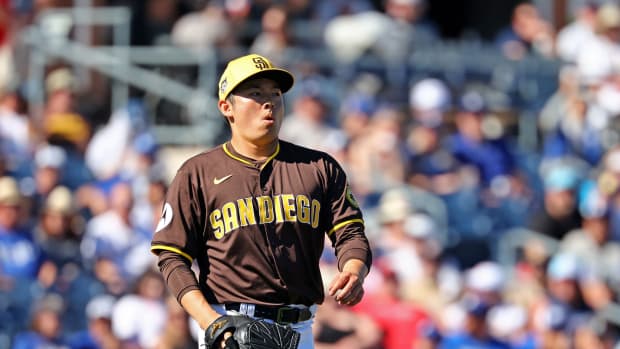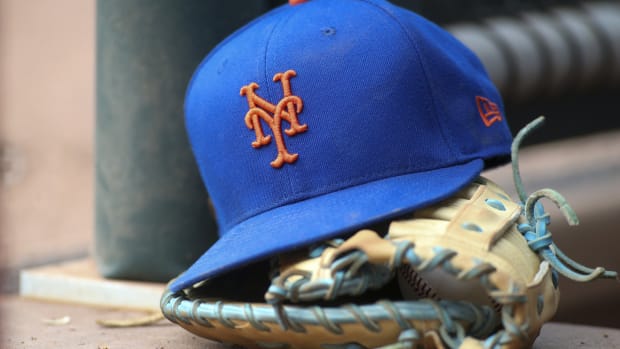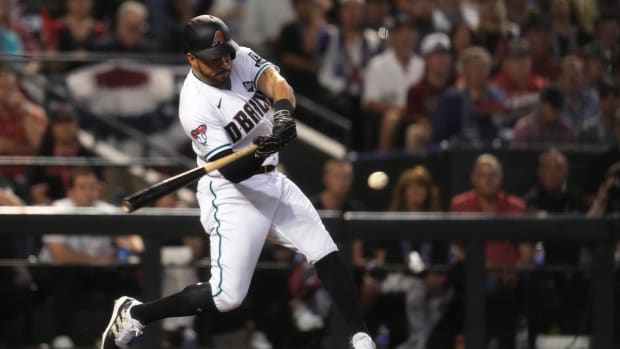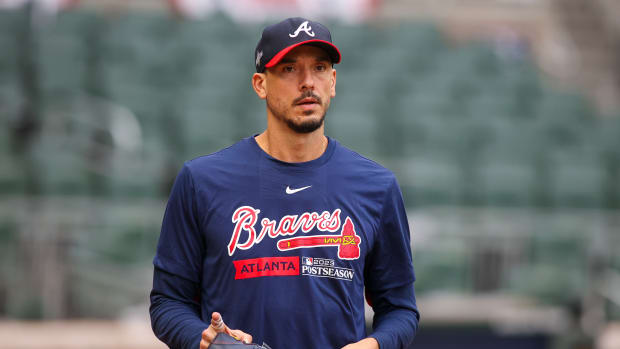Paul Goldschmidt Extension Provides Latest Evidence of Players Wanting to Avoid Free Agency
The Cardinals have the next face of their franchise, even if he hasn’t taken an official at-bat in red. Paul Goldschmidt reportedly inked a five-year, $130 million contract on Thursday just three months after the only team he ever knew, the Diamondbacks, shipped him to St. Louis in a four-player trade. The contract will keep Goldschmidt in St. Louis until his age-36 season and give the Cardinals one of baseball’s marquee players at an extraordinary discount.
Goldschmidt’s contract is the latest evidence that even the game’s best players want to avoid free agency, something likely stunning to players who saw Giancarlo Stanton sign a 13-year, $325 million deal in November 2014. A player of Goldschmidt’s caliber would have earned over $200 million had he been a free agent after the 2016 season. That offseason, a 26-year-old Jason Heyward entered free agency with a career slash line of .268/.353/.431, a 114 OPS+ and elite defense. He earned an eight-year, $184 million deal from the Cubs. That was the same year that a 32-year-old Chris Davis, who checked in at .255/.330/.506 with a 122 OPS+, received seven years and $161 million from the Orioles.
A 27-year-old Goldschmidt, in just four seasons, logged a .299/.395/.535 line with 151 OPS+ by 2015’s conclusion. He finished that season second in NL MVP voting behind Bryce Harper, who compiled one of the greatest individual seasons in contemporary baseball history. Through that season, Goldschmidt had just over $5 million in earnings—less than half of what Davis made in the season before signing the massive contract extension—and $3.1 million for the 2015 season itself.
The Heyward and Davis contracts are precisely why Goldschmidt is signing an extension that doesn’t resemble what he’s actually worth. Teams are refusing to pay for past performance any longer and, as Jon Tayler documents in painstaking detail, teams have seemingly boxed their best players into accepting underwhelming extensions instead of facing free agency.
Goldschmidt may be happy that a deal is done, but it’s painful to see arguably the game’s most underrated player never see the money he deserves. Goldschmidt may as well be baseball’s Scottie Pippen, except Goldschmidt has played four career playoff games. Just as Pippen was routinely paid less than inferior teammates Ron Harper and Luc Longley while with the Bulls, Goldschmidt will make less than Yoenis Cespedes and Albert Pujols in 2019 even though the 31-year-old first baseman remains one of the game’s preeminent offensive players.
Casual fans west of the Mississippi missed watching one of the game’s most complete corner infielders as Goldschmidt toiled in Arizona. In seven full seasons, Goldschmidt has finished top-six in MVP voting four different times. After an atrocious start to 2018 that saw him hit .198 with five homers and a 37% strikeout rate in the first 47 games of the year, Goldschmidt torched the opposition—.328/.418/.606 with 28 homers—on an otherwise forgettable Diamondbacks squad over his last 110 games. After his rash of strikeouts to start the season, pundits questioned whether his bat speed abandoned him. He answered by finishing the season with a better average exit velocity than Harper, Trevor Story and Ronald Acuna.
Goldschmidt isn’t just elite, he’s better than the few baseball stars that we readily identify. He has a higher career OPS+ (145) than contemporaries Stanton, Harper and J.D. Martinez. His base stealing days may be behind him, but he stole 113 bases between 2012 and 2017 in 141 attempts—the same career stolen base percentage as Kenny Lofton and better than Derek Jeter’s. The more he sees some pitchers, the more he seems to own them, regardless of reputation. In 34 plate appearances against Tim Lincecum, he went 15-for-28 (.536) with seven homers (a 1.916 OPS); in 47 plate appearances against Clayton Richard, he went 15-for-35 (.429). Think it’s just veterans he’s dominated? Consider his line against 24-year-old Rockies flamethrower German Marquez: 10-for-26 (.385) with four homers. NL West pitchers must be relieved that he’s gone.
Given the challenging state of free agency, Goldschmidt is likely happy with the result. He goes from a literal baseball desert with few home fans and a rebuilding organization to one of the game’s model franchises. His selfless, affable demeanor will play well in St. Louis, a place that worships their stars so long as they demonstrate consistency and loyalty. Barring a shocking change in attitude, Goldschmidt might top team jersey sales by the end of his first year.
An eighth-round draft pick from Texas State, Goldschmidt debuted at 23 and faced a long wait to free agency. Despite his excellent output throughout his career, he was never positioned to cash in on his peak performance. Like Mike Trout, it makes sense that Goldschmidt didn’t want to try to be a union standard-bearer. The mild-mannered Goldschmidt hardly seems like the personality to hold out and re-emphasize player rights in a time when owners seem to be winning every battle. But it remains unsettling that a player of such incredible consistency and durability will settle for almost $200 million less than a player—Stanton—who has compiled a less impressive career.
The Cardinals-Goldschmidt marriage is bound to be successful and the contract extension was one that both sides likely wanted to make. But he’ll be doing it for about half the money he deserves, making him the latest star player to (rightfully) protect his future instead of subjecting himself to the frosty experience of free agency.


































